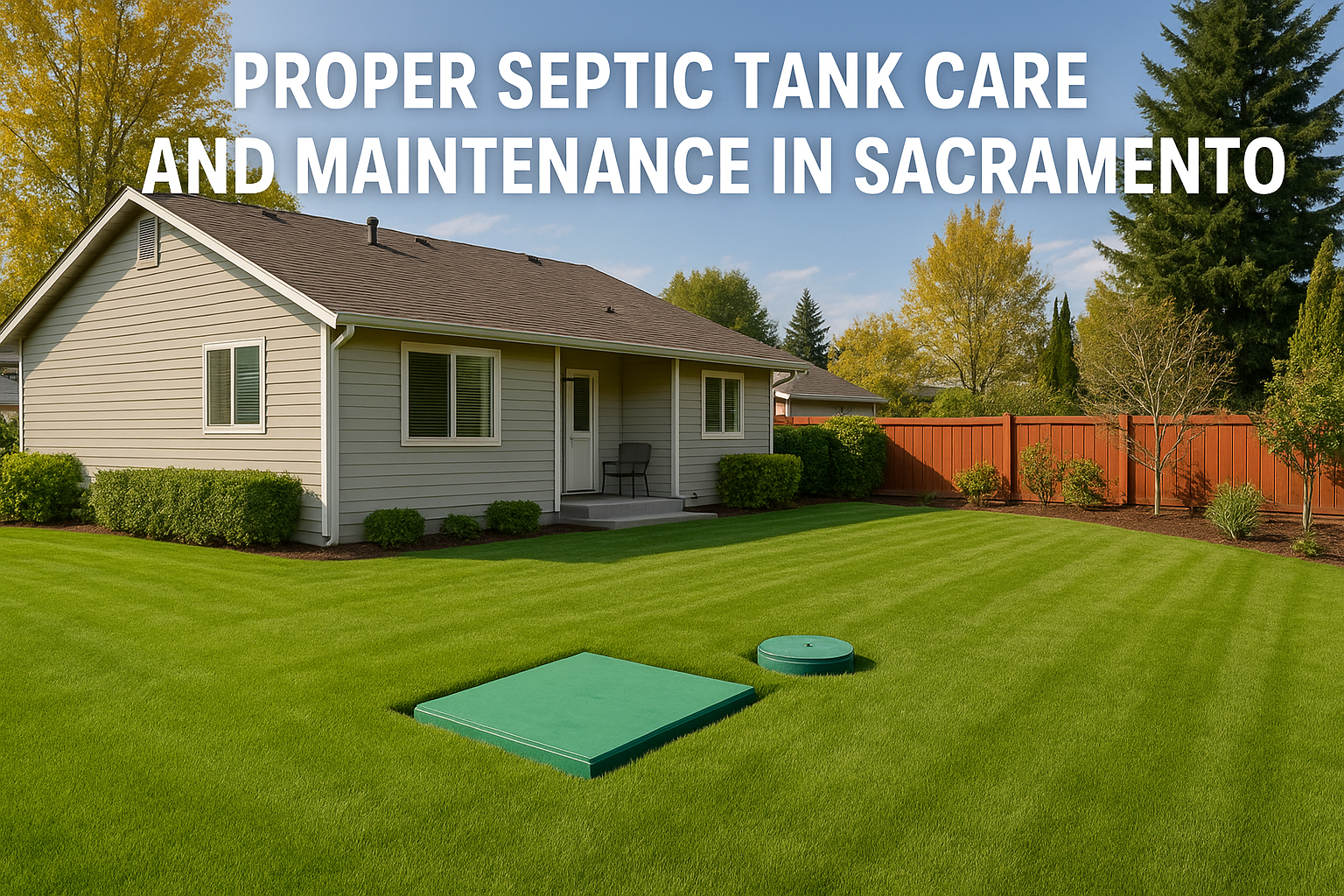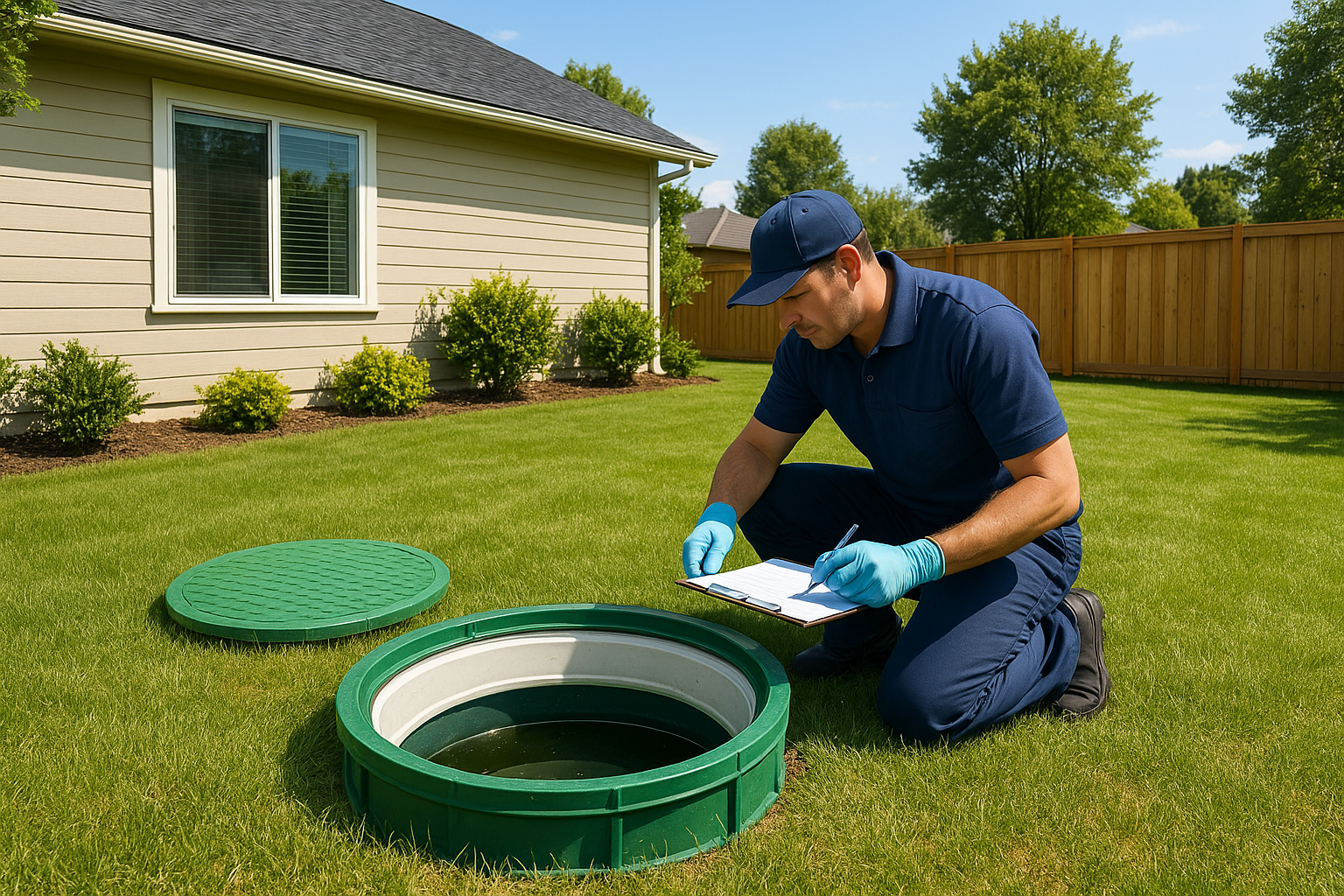Sacramento homes depend on a quiet, reliable septic system. If you are planning cleaning a septic tank, this guide shows exactly what to avoid, how to prepare, and when to schedule service so you prevent backups, odors, and surprise repair bills. You will also see a safe homeowner checklist, a local cost overview, and direct tips from Blue Ribbon Septic.
The goal is simple: keep wastewater moving, protect your drainfield, and stop accidental damage caused by products that look harmless but are not. You will learn what professionals inspect during septic system cleaning, how to schedule your service, and which habits can extend system life for years.
What is Cleaning a Septic Tank?
Cleaning a septic tank involves pumping out sludge and scum as part of the cleaning process, rinsing components, and inspecting baffles, filters, and the drain field, as well as checking the scum layer and sludge layer. It prevents backups, odors, and costly repairs. Most homes schedule pumping every 3 to 5 years, with pumping frequency determined by usage, tank size, and household habits.
Cleaning a Septic Tank: 7 Surprising Items To Avoid
Why Your Septic Tank Needs Routine Care
Your tank separates solids, scum, and liquid. When solids accumulate, they move toward the outlet and can clog the filter or drain field. Regular septic system cleaning, combined with good daily habits, keeps everything flowing smoothly. Regular maintenance is essential to ensure your septic system is properly maintained, which helps it last longer and prevents costly repairs. The US EPA calls out four pillars of care: inspect and pump, use water efficiently, dispose of waste properly, and protect the drainfield. Regular pumping is a key part of ongoing septic system care.
Sacramento-Specific Risks You Should Know
Local drains often fail due to fats, oils, and grease that cool and harden in lines. Sacramento utilities emphasize the importance of proper FOG disposal to prevent blockages in homes and city pipes. Keep grease out of sinks and trash it correctly.
Quick Steps: How to Clean a Septic Tank Safely
Before You Book: Info Your Pumper Will Ask
Have these ready when you schedule cleaning out septic tank service:
- Tank size, if known, number of bedrooms, approximate last pump date
- Access notes like lid location and yard clearance
- Any slow drains, gurgling, or odors you notice
- Preferred window for service and pets secured
- Confirm your provider is a licensed septic professional or septic service professional.
Pro tip: If you are still searching for how to clean septic tank, take quick photos of lids or access risers so your technician arrives prepared.
Consider establishing a service contract for regular inspections and maintenance, particularly if your system features mechanical or electrical components.
Day-of Checklist Homeowners Can Follow
- Clear 3 to 5 feet around the lids and move vehicles.
- Mark lids and keep kids and pets inside.
- Ask the tech to show the sludge and scum levels before and after.
- Request a baffle and effluent filter check.
- Ask the technician to inspect the distribution box for proper function.
- Get a written record of gallons removed and any issues found.
- Set your reminder for the next visit.
After service, watch for warning signs such as slow drains, unpleasant odors, or wet spots in your yard, as these may indicate septic system issues that need prompt attention.
The Seven Surprises: What Not To Put In or Around Your System
“Flushable” Wipes and “Biodegradable” Products
They do not break down quickly enough for a septic environment and can clog filters. Use septic-safe toilet paper only. Toilets are not trash cans—only human waste and toilet paper should be flushed. All other items should be disposed of in a trash can, not the toilet. EPA guidance emphasizes the importance of proper waste disposal to protect systems.
Antibacterial Cleaners and Heavy Bleach Use
Routine cleaning is fine, but frequent use of high-dose disinfectants can harm the bacteria in the tank that digest waste—these bacteria are living organisms essential for breaking down waste. Choose mild cleaners, dilute as directed, and avoid weekly shock doses.
Cooking Oil, Grease, and Fats
Grease cools into sticky blockages that trap solids and narrow pipes. Sacramento’s program teaches to collect FOG in a can and dispose of it to prevent backups at home and in city mains.
Coffee Grounds and Fibrous Food Waste
Grounds, rice, pasta, and peels add solids and swell with water. Compost or trash them instead of using the garbage disposal.
Cat Litter and Absorbents
Even “flushable” litter swells and contains clays that settle into sludge. Bag and trash litter to keep volume and grit out of the tank.
Medications and Harsh Chemicals
Do not flush pills, paint thinner, pesticides, or automotive fluids down the drain. Pouring toxins into your plumbing can harm the beneficial organisms in your septic system and disrupt proper waste treatment. The FDA advises using drug take-back programs or approved at-home disposal methods, rather than flushing them down the toilet or sink.
Paint, Solvents, and Thinners
These are household hazardous wastes. California’s Paint Management program directs residents to PaintCare drop-off sites for safe recycling and disposal. Keep all solvents out of sinks, tubs, and shop drains.
Cost Guide: How Much Does Septic Tank Cleaning Cost in Sacramento
The cost of septic tank cleaning varies with tank size, access, and distance to a disposal site. Many homeowners budget a few hundred dollars, with large or overdue tanks costing more. Pumping frequency, which determines how often your tank is pumped, directly affects costs, as more frequent service can help prevent expensive issues. Neglecting to have your septic tank cleaned regularly can result in thousands of dollars in unnecessary repairs. Scheduling your tank pumped at the recommended interval helps avoid unexpected expenses. Ask your provider to itemize pumping volume, filter service, and inspection so you can compare apples to apples.
If you need fast help, Blue Ribbon Septic serves Sacramento with licensed techs, tidy work areas, and photos that show what we did and why.
Smart Maintenance: How Often Are Septic Tanks Pumped
Most households pump every 3 to 5 years (this three to five-year interval is standard for regular maintenance), more often for big families or smaller tanks. Plan your interval using the last pump date, sludge depth, and water use. The EPA recommends regular inspection and pumping as a core part of septic system care best practices.
Watch-outs
- New garbage disposals accelerate the buildup of solids, which in turn shorten pumping intervals.
- Dripping faucets can add up to gallons per day, overloading the system.
- After parties or heavy laundry days, spread washing over the week.
- Run only full loads and select the proper load size for your washing machine to conserve water and protect your septic system.
- Use water-efficient products, such as high-efficiency toilets and faucet aerators, to promote water conservation and reduce strain on your septic system.
- Inspect drain lines for leaks or clogs as part of routine maintenance.
- Avoid driving heavy vehicles or planting trees over the drainfield to prevent damage to pipes.
- Systems with mechanical components or alternative systems require more frequent inspection and maintenance.
Pro tips
- Add risers and labeled lids to speed future service and reduce labor time.
- Keep a one-page record of dates, gallons, and any repairs.
- Plant grass, not shrubs or trees, over the drainfield to protect pipes and allow evaporation.
- Protect your family's health and the environment by following best practices for septic maintenance and environmental protection.
- Properly manage and treat household waste to ensure your septic system works efficiently.
Common Myths and Costly Mistakes
- “Additives replace pumping.” No product can replace the physical removal of sludge.
- “If drains work, the tank is fine.” Many failures start silently at the drainfield.
- “Bleach cleans the tank.” Bleach disinfects surfaces, not septic interiors.
- “Garbage disposals are septic-safe.” Heavy use accelerates pumping needs.
- “Flushable wipes are fine.” They clog filters and lines.
- “Pumping once fixes everything.” Ongoing maintenance septic still matters.
Protect Your Home With Professional Help
When you avoid the seven surprise items above and follow the simple checklist, you reduce the need for repairs and extend the system’s life. Whether you are new to clean septic tank care or planning your next service, Blue Ribbon Septic makes it easy for Sacramento homeowners to act with confidence.
Next steps
- Review your last service date and set a reminder to ensure you stay on schedule.
- Conduct a quick sweep of your pantry and bathroom to remove any items that may cause problems.
- Book service before odors or slow drains start.
For expert support, schedule an appointment with Blue Ribbon Septic today. Regular septic service, including professional inspections and pumping, is crucial for maintaining the health and longevity of your system. Our team will inspect, pump, and explain every step, so your home stays safe and stress-free.
Septic Cleaning FAQs for Sacramento Homeowners
How do I know it is time for service?
Watch for slow sinks, gurgling, or wet spots near the drainfield. If it has been 3 to 5 years, schedule an inspection and pumping.
What should I do on the day of service?
Clear access to lids, keep pets inside, and ask your tech to check baffles and the effluent filter. Get photos and a written record.
Can I pour grease down with hot water to melt it?
No. Grease cools and hardens in the line. Collect FOG in a can and dispose of it properly.
Are “flushable” wipes safe for my septic?
Avoid them. They do not break down quickly and can clog filters and lines.
Where can I dispose of old paint or solvents?
Use PaintCare drop-off locations listed by CalRecycle instead of pouring them into drains.
How should I dispose of expired medicines?
Use a drug take-back site or an approved mail-back envelope. Do not flush them.
Can I pour paint or chemicals down the utility sink or kitchen sink?
No. Never pour paint, chemicals, or other hazardous substances down the utility sink or kitchen sink. These toxins can damage your septic system and harm the environment. Always use proper disposal methods for hazardous waste.






